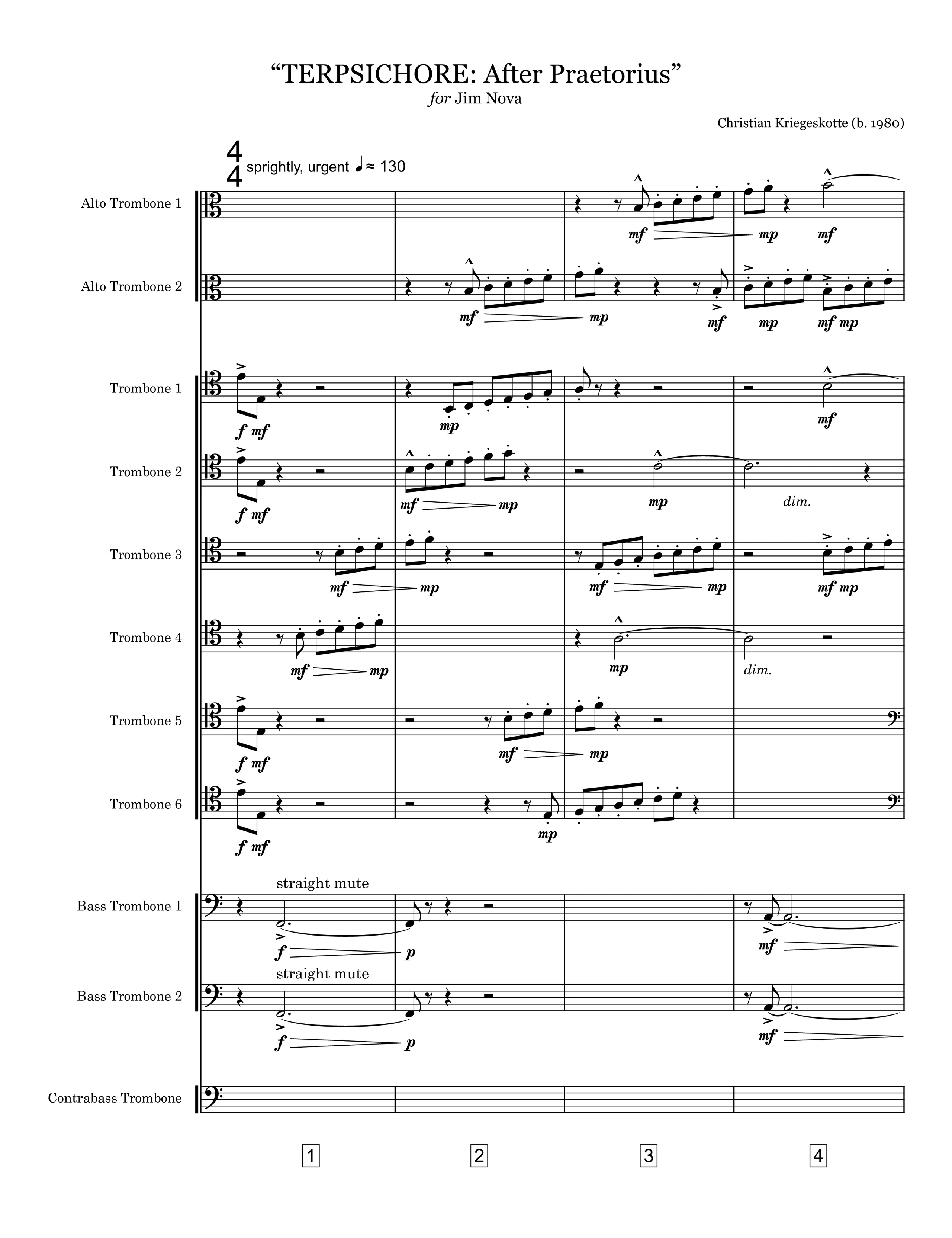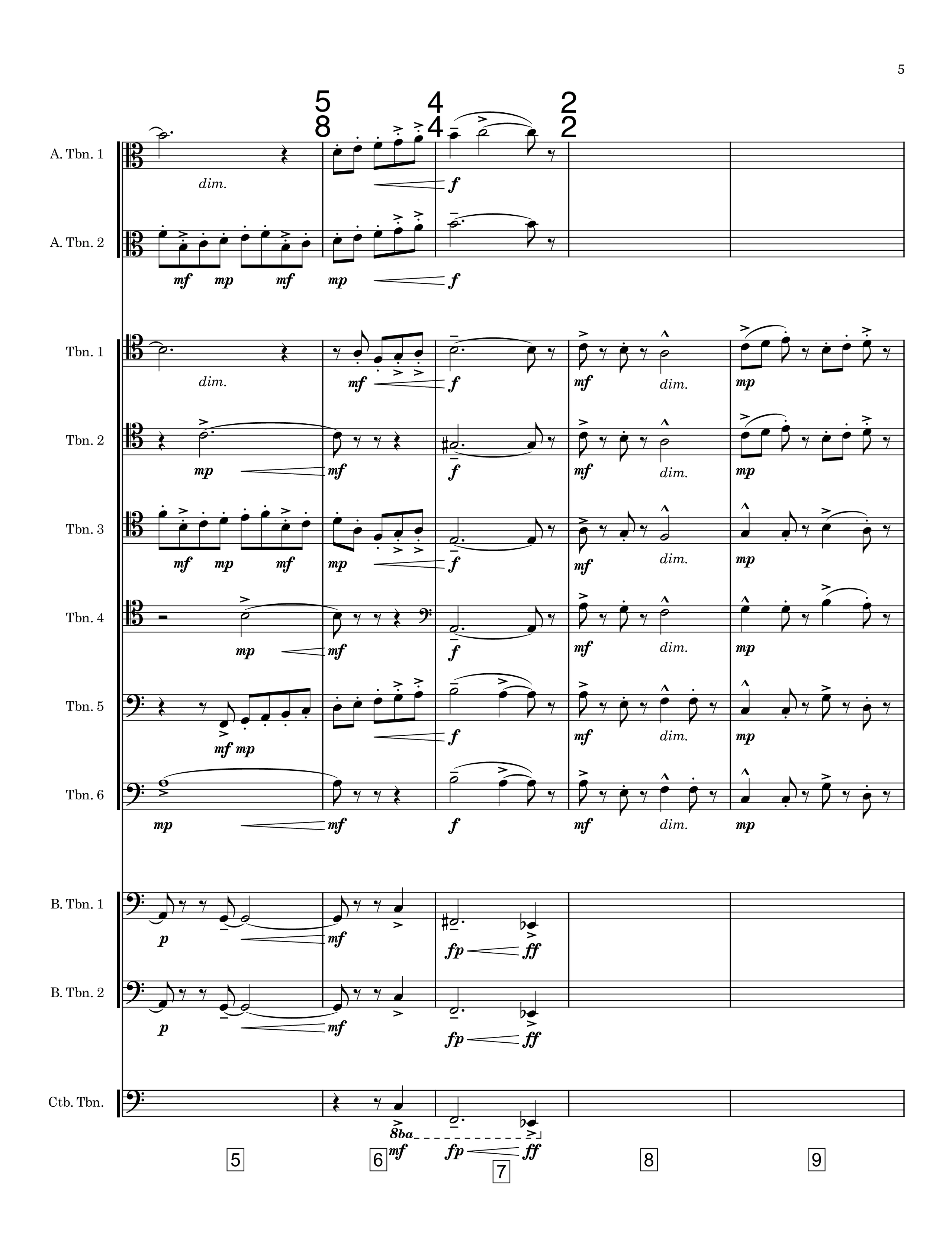

1 / 28
0:00/0:00
Other
2024
- Program Notes
Terpsichore (terp-si-core-ay) comes to us from Greek Mythology. One of the nine classical Muses, her patronage was that of lyric poetry, dancing and playing the flute. In our contemporary lexicon, the derivative adjective terpsichorean means (n.) "a dancer" and (adj.) "pertaining to dancing."
In 1612, the German composer and music theorist Michael Praetorius (1571—1621) published a collection of over 300 dances in a collection he called Terpsichore, Musarum Aoniarum. Arranged by Praetorius for unspecified instrumental ensembles, the dances were derived from the stately French dance repertoire of the day, which includes forms such as bourrée, gavotte, la volta, galliard, etc.
This work draws from the Branles Simple (la, la, la, je ne l'ose dire), which is included in Praetorius' collection and attributed to French composer Pierre-Francisque Caroubel (1556 —1615?). My treatment of the material takes inspiration from another modern work, the colossal and rarely heard ballet/opera, Tanz-Schul, completed in 1987 by Mauricio Kagel (1931—2008). Kagel similarly sourced material from a manual of dance music, Gregorio Lambranzi’s 1716 treatise New and Curious Theatrical School of Dancing, which featured bizarre illustrations, detailed descriptions and short, melodic examples. Kagel's preference to satirize the material made special use of the fabulous illustrations and countless notational errors found throughout the musical engravings in the treatise.
I prefer to think of my piece as an examination of Praetorius and Caroubel's work as seen through a kaleidoscope. The source material floats like an earworm melody that's been stuck in your head for as long as you can remember; mutated, interrupted, deconstructed and reassembled in the churning tides of thought and memory.
- Recording Notes
Performed and recorded solely by James Nova, all trombones.
- Performer Credits
- James Nova
- Publisher
- Argent Owl Press (ASCAP)